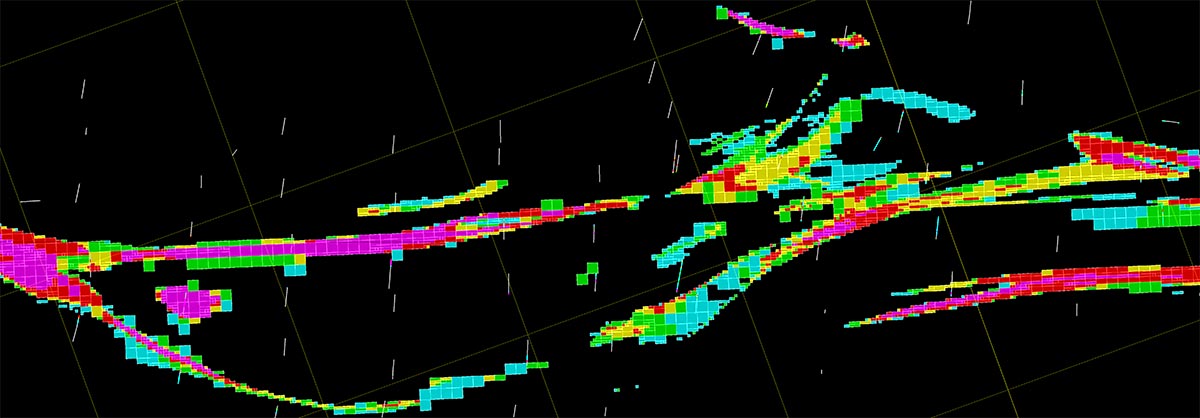June 2022 Issue Index
Introducing grade trends
Maptek DomainMCF uses machine learning techniques to quickly and cost-effectively produce resource models – now attention is turned to grade trends.
Maptek DomainMCF has demonstrated success in the use of machine learning techniques to produce repeatable and reliable results for modelling domains.
Successive versions of DomainMCF have provided geologists with the ability to build rapid domain models directly from a validated geological database. This approach has proven useful in many applications including grade control, resource modelling and geotechnical domain generation, across a range of commodities in underground and open cut mines.
The 2022 release takes data-driven model generation to a new stage with functionality incorporating prediction of numeric variables in the block model output. Numeric attributes could represent analytical grades from a chemical laboratory such as gold grades or coal quality, or they could be geometallurgical or geotechnical variables such as bond index or rock mass rating.
Numeric data is included with the relevant domain code. Attention is required to manage missing data within the numeric fields, as not all geological intervals will have valid information for specialised tests such as csn (crucible swelling number) for metallurgical coking coals or paf (potentially acid forming) for ore or mineralised waste material. The prepared data file is sent to the DomainMCF compute engine for validation, analysis and processing.
Domain and numeric data is output as a conventional regular or sub-blocked block model. The geological domain boundaries are predicted in 3D and then the prediction of grade trends is constrained within these geological domains. This is analogous to what are termed hard boundaries in conventional resource estimation practice. The grade trends are predicted using machine learning and are not to be confused with grade estimates for resource reporting.
Grade trends generated by DomainMCF display the 3D distribution of any modelled attribute. It may be the distribution of gold or copper grades in stockwork mineralisation or the penetration rate from blast hole measurement while drilling data.
In areas of uncertainty, grade trends can be used to target where to drill and collect data to improve confidence in the geological model.
DomainMCF grade trends can also be used as input to locally varying anisotropy (LVA) estimation techniques. The grade trend vectors in x, y and z replace the standard sample search ellipsoid orientations and facilitate grade estimation around fold hinges and curved domains.
DomainMCF easily processes big data. It has been tested with more than 100 million data attributes from one of the largest ore deposits in the world and delivered a 3D domain model with grade trends for 25 different variables in less than four hours. The interplay and correlation between grade trends is preserved in the machine learning workflow.
Noting that the industry has 60 years of confidence in kriging and its variants and 30 years of experience in different forms of simulation for resource estimation and reporting, Maptek Technical Lead for DomainMCF Steve Sullivan does not challenge the old order lightly.
Future research and development is required to tune the underlying processes to convert these grade trends to grade predictions.
A new technique requires extensive comparison with and validation against existing accepted practice before becoming the new standard. DomainMCF is set to do just that.
Acknowledgment to Chris Giles, Havilah Resources for imagery
- Machine learning is proving successful at modelling domains, even for extremely large datasets containing hundreds of millions of points
- DomainMCF now also generates grade predictions from numeric attributes for enhanced understanding of deposit complexity
- Grade trends are effective for targeting additional drilling to improve confidence in the geological model

